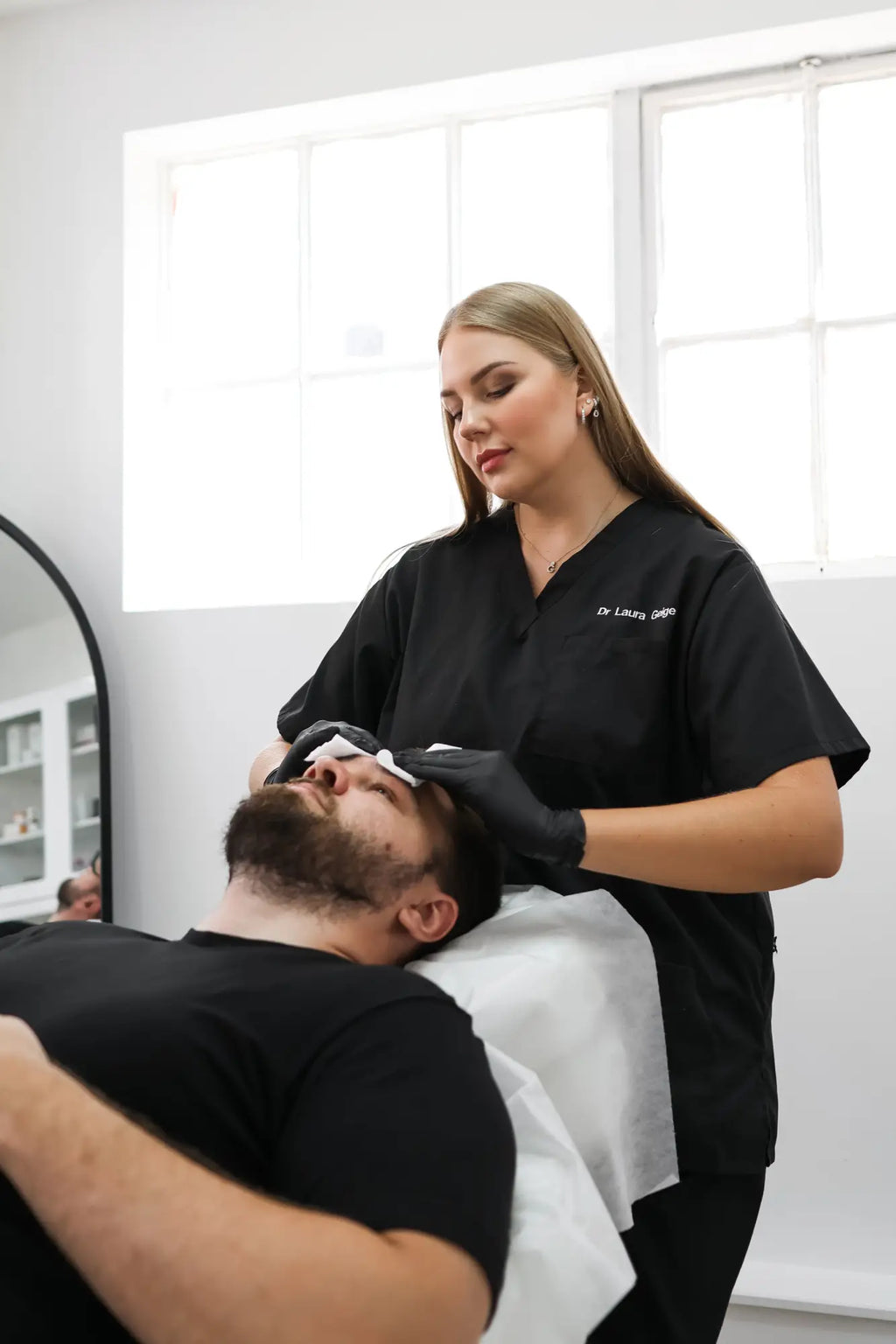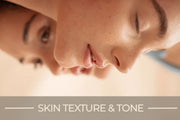How Does Botox Help With Medical Issues Like Migraines Or Excessive Sweating?

Content Verification



🎯 Quick Takeaways from the Article 🎯
- ✨ Botox isn’t just for wrinkles—it can help with migraines & excessive sweating! 💉
- 🤯 It blocks nerve signals to provide relief from chronic migraines. 🧠
- 💦 Say goodbye to excessive sweating—Botox calms overactive sweat glands! 🚫💧
🧑⚕️ Key Advice and Tips from Our Experts 🧑⚕️
- 🩺 Always consult a qualified professional to see if Botox suits you. 📋
- ⚠️ Discuss any medical history & current meds before treatment. 💊
- 🔄 Follow post-treatment care for the best results! 🛡️
Botox treatments are widely known for their role in anti-wrinkle treatments, but their medical benefits go beyond aesthetics. Botox injections can effectively treat chronic migraines, excessive sweating (hyperhidrosis), and muscle disorders by blocking nerve signals. This makes them a valuable option for patients seeking relief from conditions that impact their quality of life.
If you’re considering Botox treatments in London or searching for Botox near me, understanding its full potential is essential. In this article, we’ll explore how Botox works medically, its role in treating migraines and hyperhidrosis, and expert insights on its effectiveness. Whether you're looking into Botox anti-ageing treatments or seeking relief from a medical condition, this guide will help you make an informed decision.
How Do Botox Injections Work?
Botox is a neurotoxin derived from Clostridium botulinum that temporarily blocks nerve signals to targeted muscles or glands. While commonly used in Botox anti-ageing treatments to relax facial muscles and reduce wrinkles, its mechanism also benefits various medical conditions. By preventing excessive muscle contractions or gland activity, Botox treatments can help manage chronic pain, sweating, and muscle disorders.
According to Dr. Giedre Narkiene, an expert in dermatology from It’s Me & You Clinic, “Botox works by disrupting the communication between nerves and muscles or sweat glands. This effect can help reduce excessive movement, pain, or secretion, making it useful beyond Botox for wrinkles.”
For those dealing with chronic migraines, hyperhidrosis, or muscle spasms, Botox injections can help control symptoms by temporarily calming overactive nerve responses. Unlike surgical interventions, Botox provides a minimally invasive approach with results that typically last for several months before requiring retreatment.
Botox for Migraines: How Does It Help?
Chronic migraines are severe, recurring headaches that last for hours or even days, often disrupting daily life. Those affected may experience nausea, sensitivity to light and sound, and persistent pain that is difficult to manage. When traditional treatments fail, some patients turn to Botox treatments as a potential option for relief.
Botox injections work by blocking the release of neurotransmitters responsible for transmitting pain signals. By relaxing overactive muscles in the forehead, neck, and shoulders, Botox can help reduce the frequency and intensity of migraine episodes. Unlike typical painkillers, which provide short-term relief, Botox targets the source of discomfort by preventing the activation of pain pathways.
According to Dr. Laura Geige, Medical Director and Senior Practitioner, “Botox has been used in chronic migraine management for patients who experience 15 or more headache days per month. By targeting key muscle groups, Botox treatments in London have shown promising results in reducing both the severity and frequency of migraines.”
Many patients report fewer headache days and improved quality of life after undergoing Botox injections for migraines. The treatment is administered every 12 weeks in multiple injection sites around the head and neck. The NHS has approved Botox for chronic migraines, making it an accessible option for those who meet the criteria. However, results can vary, and a consultation with a qualified medical professional is essential to determine suitability.
Treating Hyperhidrosis (Excessive Sweating) with Botox
Hyperhidrosis is a medical condition that causes excessive sweating beyond what is necessary to regulate body temperature. It can affect the underarms, hands, feet, and face, often leading to discomfort and social anxiety. Many people struggle to manage excessive sweating with antiperspirants or medications, making Botox treatments a potential option for symptom relief.
Botox injections work by blocking the nerve signals that stimulate sweat glands, reducing excessive moisture in the treated area. By preventing overactive gland activity, Botox helps control sweating in specific areas like the armpits, palms, soles of the feet, and even the scalp. Patients looking for Botox near me to treat hyperhidrosis often seek a minimally invasive and effective solution.
According to Dr. Snieguole Geige, a medical doctor and senior adviser, “Botox is a recognised treatment for hyperhidrosis, offering relief for patients whose sweating affects daily activities. By temporarily blocking sweat gland activation, Botox treatments can significantly reduce moisture production and improve comfort.”
The effects of Botox injections for hyperhidrosis typically last between four and six months, depending on individual response. Aftercare involves avoiding strenuous activities and excessive heat for 24 hours to allow the treatment to take full effect. While results are temporary, many patients find Botox to be a reliable option for managing excessive sweating when other methods fail.
Other Medical Benefits of Botox
Beyond treating migraines and hyperhidrosis, Botox treatments are used in various medical conditions to help manage symptoms. Its ability to block nerve signals makes it useful in conditions involving muscle overactivity or involuntary contractions. While many associate Botox for wrinkles with aesthetics, its role in medical treatments is extensive.
One common application is for muscle spasms and movement disorders, such as cervical dystonia, which causes painful neck muscle contractions. Botox injections can help relax these muscles, reducing discomfort and improving mobility. Additionally, Botox treatments are used for TMJ (temporomandibular joint) disorders, where excessive jaw muscle tension leads to pain, teeth grinding, and headaches.
Another medical use is for overactive bladder, a condition that causes frequent urges to urinate. Botox can help relax the bladder muscles, reducing urgency and leakage episodes. It is particularly beneficial for patients who do not respond well to conventional treatments.
Medical practitioners also use Botox anti-wrinkle injections in clinical settings to assist patients with neurological conditions like Bell’s palsy or post-stroke spasticity. While its cosmetic benefits are well known, its versatility in healthcare demonstrates that Botox is more than just an anti-wrinkle treatment. Consulting a qualified professional is essential to determine if Botox is a suitable option for specific medical concerns.
Who is a Good Candidate for Medical Botox?
Not everyone is suitable for Botox treatments, but many people with medical conditions such as chronic migraines, hyperhidrosis, muscle spasms, and overactive bladder may benefit. Botox injections are typically recommended when other treatments have failed or when symptoms significantly impact daily life. However, a thorough assessment by a medical professional is essential to determine suitability.
Eligibility depends on factors like medical history, overall health, and the specific condition being treated. While Botox anti-wrinkle injections are widely used in aesthetic treatments, medical Botox is subject to additional considerations, including dosage, targeted areas, and potential side effects. Patients with neurological disorders, allergies to Botox ingredients, or certain infections may not be suitable candidates.
Consulting a qualified professional is crucial before undergoing Botox treatments in London or elsewhere. A specialist can evaluate individual needs, discuss risks, and ensure the treatment is performed safely. Whether considering Botox for wrinkles or a medical condition, professional guidance is essential for achieving safe and effective results.
The Bottom Line
While widely known for Botox anti-wrinkle injections, Botox also plays a significant role in medical treatments. From managing chronic migraines and hyperhidrosis to treating muscle disorders and overactive bladder, its applications extend beyond aesthetics. Botox treatments offer symptom relief for various conditions, but professional consultation is essential to determine suitability.
If you’re considering Botox for medical reasons, speak to a qualified specialist for expert advice. For more on its aesthetic benefits, read our article on Botox anti-wrinkle injections to explore its full potential.
Disclaimer: This article is for informational purposes only. Always seek independent medical advice from a healthcare professional before considering Botox for medical conditions.




























